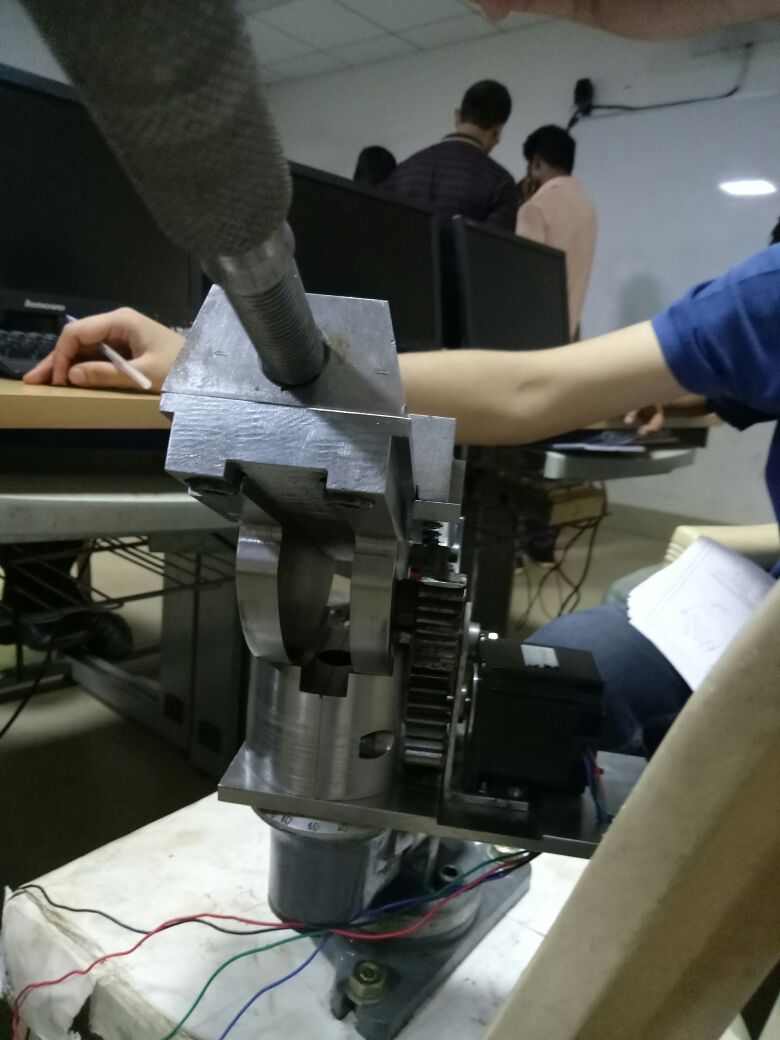Smart Vise
Any conventional bench vise is rigidly fixed to the base platform and does not allow the freedom for the user to do machining on the job at different angles. Hence the job has to be unclamped and repositioned multiple number of times to obtain the desired machined output. Hence smart vise is an effective modification of this conventional tool which facilitates conventional machines to machine profiles by swiveling the work piece during machining as well as tilting the work piece as per requirement without using Computer Numerated Control (CNC) machine. It can be used as an alternative to an exensive tool as CNC machine especially in small manufacturing units where financial part becomes a major constraint. The project uses two main mechanisms used in this vise is Sliding mechanism & Gear and pinion mechanism. Here are some areas where we can use this smart vise effectively:
-
To make required concave and convex surface in a small scale industry without using CNC machine.
-
To give required angle of cutting for as per need in a single job set.
-
To manufacture single point cutting tool we can use this vice.
An assembly of all the parts can be viewed by clicking here.
It started with the selection of the raw materialon the first day. We went to the scrap yard in cttc to select raw material. EN steel was selected as a raw material. We had to lift a long log of a EN steel from the scrapyard to the cutting section where we got the desired geometry of the material we required to do the rest of the machining operations. It took us one day to complete the job given we simply had to do manual labour.
The next week we returned to CTTC after our classes were over to see the status of our base piece. It was done perfectly to the required shape and size. A professional also told that EN steel being hard was to be subjected to gas welding flames of very high temperature rather than simply cutting it with some tool to make precise cuts and form the desired shape. Then we had to do milling and use the CNC machine to adjust the width, height and make grooves. All of us never ever had a chance to see and operate a milling machine or a CNC machine or a grinding machine. So it was something new to us.
The professionals taught us how to operate them. We spent three weeks to make the necessary cutsa, material removal and grooves. Even after three weeks our job was about 60 percent done. We laughed at us and even the professionals laughed that even after nearly a month of operating the machines we were able to finish 60 percent of needed work. Also owing to these backlog of work were our own quiz games, jokes and bunks. Yeah those bunks were nothing, but a round trip of the same institute in which we were working.
So finally with all this mess our mechanical model was ready after a month and two weeks. Me and one of my friends from the group went to the centre to see the status of our model. It was designed perfectly. My friend and I were happy with the result. Now the time was to automate with electrical sensors and a remote as an external means to give commands. We went to the electrical section of the institute to ask for the circuit board and sensor, but they said they had none.

Our group decided to visit all the major electrical stores of Bhubaneswar to see whether the electrical components were available or not. After 2-3 days we found none. Hence finally we had to order it from online shopping store. The funniest part of all of this is that it was the day of our project presentation and viva-voice when the components arrived. Fixing and building an app to access it from a phone was done in the same day and our project was finally prepared 2 minutes before our presentation started. We all felt a sigh of relief that our job was finally done.
We all learnt so much and had fun as well. So overall it was a good journey.